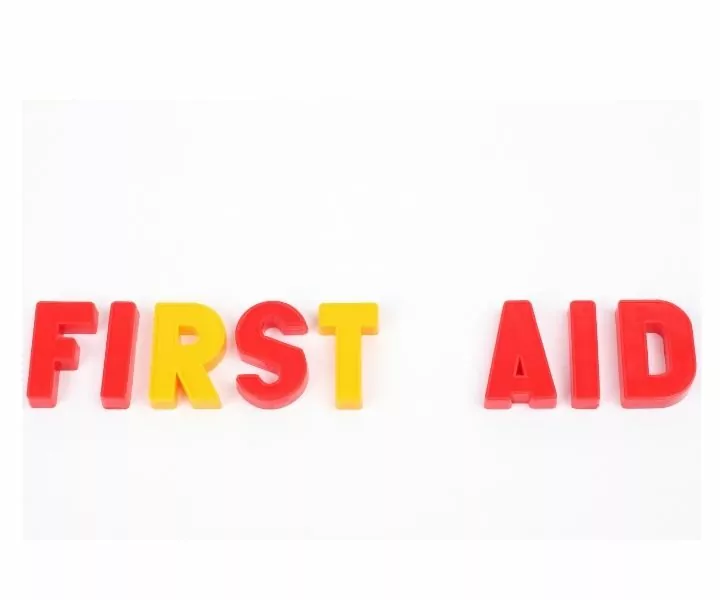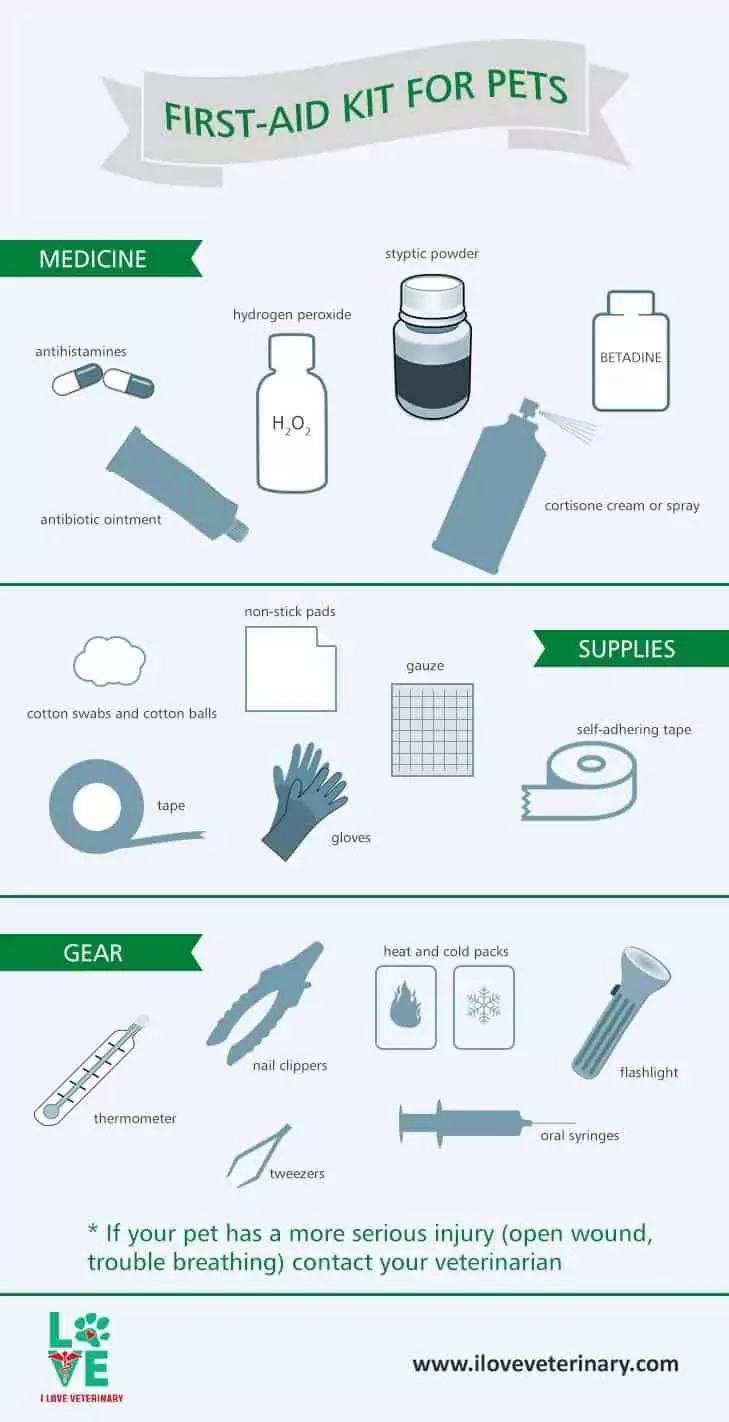Sometimes our pets get easily injured, scratched or you just need to help them on your way to the vet. This is why you need a veterinary first aid kit for pets! Although, Pet First Aid Awareness Month is only celebrated in April each year – being aware of how to help and protect our pets when they need is, should form part of your due diligence as a responsible pet owner!
Here are some items that your First-Aid kit for pets should contain:

1. MEDICINE
Hydrogen Peroxide/Sterile Saline Wash
An antiseptic solution such as hydrogen peroxide or a sterile saline solution is great to prevent any infection on your pet’s wounds – big or small! Just ensure that any products you use are pet-friendly and alcohol-free.
Betadine
Next on your pet first aid kit checklist should be any antiseptic ointment that targets an array of issues such as sores, open wounds, burns, and stings from insects.
2. SUPPLIES
Gauze Swabs
Gauze swabs are sterile, multi-purposed primary wound care tools that should be a staple in any pet first aid kit. It can be used to cover and clean many different types of wounds.
Self-Adhesive/Microporous Tape
Self-adhesive tape has many great properties, including being ultra-breathable and elastic. It comes in a variety of options to ensure that you never run out of this versatile product in your pet first aid kit.
Microporous tape is another great addition to your at-home pet first aid kit. This is a very breathable paper-based tape that is highly adhesive, yet lightweight.
Gauze
This is an essential item to have in your pet’s first aid kit. It is categorized by having a slightly coarse porous exterior, it’s lightweight and latex-free, making it a perfect option for both pet and pet parents.
Bandages
Investing in a few different sizes of standard, conforming, and self-adhesive bandages will go a long way to ensure that your pet is as comfortable as possible, without the owner having to worry that the bandages will stick to the pet’s fur.
All three options are budget-friendly and the self-adhesive bandages are waterproof and also provides great non-slip support
Sterile/Saline Wash
Sterile saline wash is a helpful addition to your veterinary first aid kit if they have smoke or debris in their eyes. Apply the wash liberally and try to flush the eye/s until all foreign objects are removed. You can also use sterile saline to wash out minor wounds.
3. GEAR
Tweezers
Tweezers are another all-purpose tool that you need in your pet first aid kit. It can be used to remove splinters from paws or ticks from hair and fur. Ensure you invest in a pair that is easy and comfortable for you to use.
Scissors
A good, reliable pair of scissors will come in handy as you would need it to cut bandages and gauze to the required size. Be sure to get a pair or two of scissors if some members of the family are right or left-handed.
Oral Syringes
Get three different sizes of syringes for each animal in your house. This will ensure that you can give medication to your pets orally, it can be used to flush out wounds, and it comes in handy when you pick up a baby bird or animal off the street.
Flashlight
This is a handy tool in many different instances. It comes in handy when there is a power cut or when you go camping and an emergency arises.
Plastic Bags
Different sizes of ziplock plastic bags come in handy to discard any used items and blood spillage, etc. Furthermore, it comes in handy when your pet has a paw injury as you can wrap the paw in a sealable plastic bag.
You might even consider using plastic wrap if plastic bags aren’t an option.
Space/Foil Blanket
This blanket should be the very first tool you will use in case of an emergency. It’s crucial to keep your pet warm to avoid it going into shock, before applying any pet first aid techniques.
Hand Towel
One or two hand towels can help keep your pet comfortable. They are also highly absorbent and can assist in many different scenarios of pet first aid care.
Bottled Water
This is especially handy if you will be in the outdoors or traveling in a car long distance.
Gloves
This is probably one of the most important aspects of a pet first aid kit. It is crucial to wear gloves when treating open wounds or a sick animal to protect the animal as well as yourself.
4. OTHER
It is a great idea to keep all your pet’s essentials close by in case of emergency, other items to keep inside or close to your pet first aid boxes should include:
- Vaccination and clinic cards.
- Info from microchipping.
- Chronic and other medication.
- Leashes and collars.
- Cat carriers.
*If your pet has a more serious injury, contact your local veterinarian without delay, and don’t attempt to fix it yourself**

